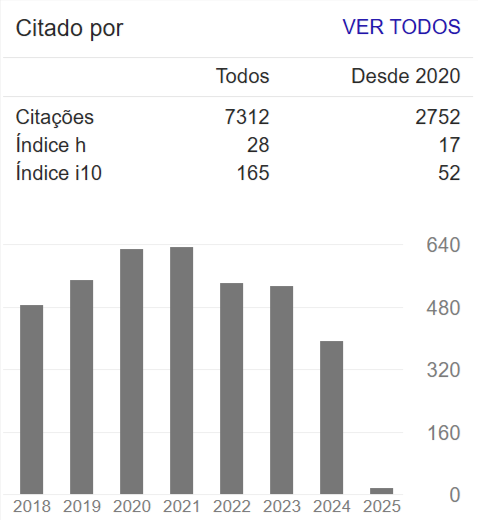Analysis of the sulfoxaflor insecticide leaching potential in soils
Abstract
Pesticides use in agriculture is justified by the need of eliminating several pests, however, it allows environmental contamination. Among these products, the active ingredient sulfoxaflor, developed by the company Dow Agrosciences, achieving great success in combating parasites that are sap-feeding. However, the compound is capable of negatively affecting non-target species such as ants, earthworms, and bees. Few studies have evaluated the relationship between sulfoxaflor and water resources, specifically groundwater. Thus, this research aimed to analyze the pesticide leaching potential in the soil profile, reaching aquifers. For that, it used four analytical models that, with physical-chemical parameters, provide valid output, which serve as a basis for further in-depth studies, they are: GSI, LIX, RLPI and LEACH. The four indexes indicated, each in its range of values, that sulfoxaflor is capable of leaching. GSI stood out because it placed it in a class with a higher percolation probability. It should be noted, however, that this study is preliminary, suggesting more robust analyzes so that the conclusions regarding the use of the impacts of using this insecticide on groundwater resources are confirmed.

















